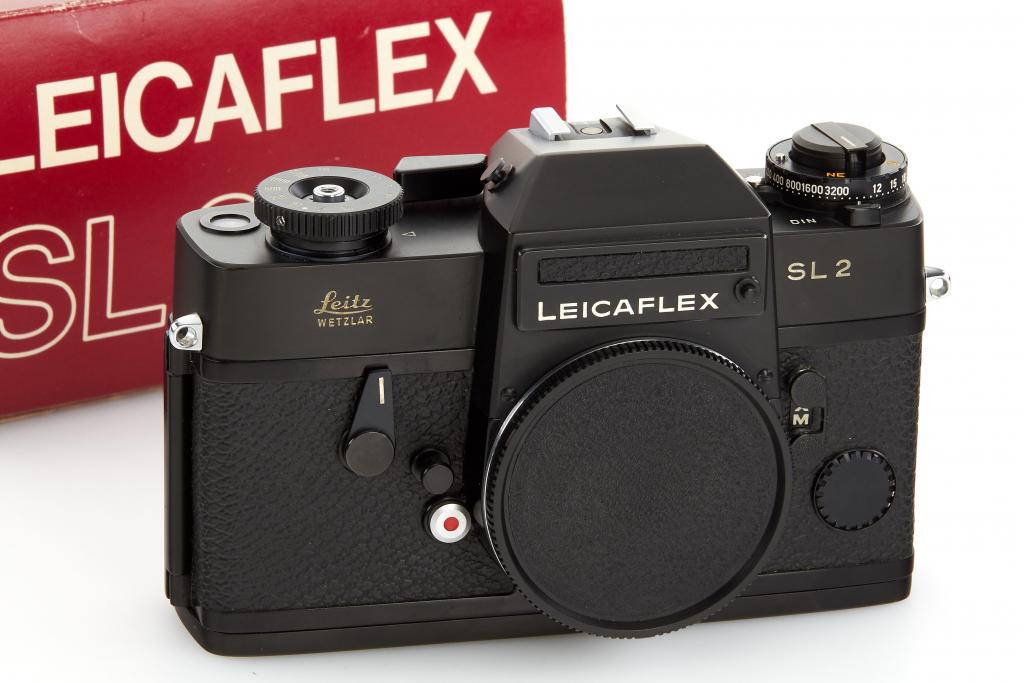08/03/2022
The Leicaflex: A Best-Kept Secret
Between 1965 and 2009, Leica produced a series of 35mm single-lens reflex cameras: initially under the name of Leicaflex, later in the form of the R-System.
Throughout the seventies, the SLR models helped to counterbalance the decline in Leica M camera sales. And from the 1980s onwards, the single-lens reflex systems gave rise to a number of outstanding lenses. Despite these positives, Leica’s SLR portfolio was not destined to last, as the later-generation models simply could not keep up with the competition.

According to the experts at Leitz Photographica Auction in Vienna, Leicaflex cameras are remarkably undervalued compared to, for example, the Leica M models. This might make them a particularly good investment at this time.
In many ways, the SLRs in Leica’s product catalogue have always been overshadowed by the popularity and timelessness of the M models – something even the experience of the 1970s did not manage to change. There was a prevailing certainty in Wetzlar that professional photographers and ambitious amateurs would always prefer to shoot and focus with the compact rangefinder models. SLR technology, on the other hand, was deemed to be no more than a passing phase. In fact, the engineers in Wetzlar took a similar view of another key technology: the autofocus; however, the ramifications of their prediction would take some time to be revealed.
The early 1960s were a time of rapid technological progress. Leitz’s initial reluctance to jump on the bandwagon meant that the Leicaflex of 1965 was released onto a market that was already dominated by the Nikon F (favoured by professionals), along with Canon and Pentax models (aimed at amateurs). Around 37,500 units of the first Leicaflex were produced in total – mostly with a chrome finish, but around 1,000 units were painted black. Today, the few remaining black-paint models are of particular interest to collectors, despite the fact that their value is currently only a fraction of, for example, a black-paint Leica M.

Their distinctive patina gives the black-paint models a special appeal. In contrast to M-Leicas, however, Leicaflex cameras are currently much more affordable. Collectors are predominantly interested in the 1,000 black-paint models produced in the early days of the Leicaflex series.
Given that a black-paint Leicaflex is actually much rarer than a black-paint Leica M3, we feel that these cameras are highly undervalued,
is the general consensus at Leitz Photographica Auction. Is the Leicaflex a best-kept secret on the collectors’ market?
The introduction of the Leicaflex was quickly followed by the Leicaflex SL, launched just three years later. Its most distinguishing new feature was its TTL (through-the-lens) light metering capability, allowing it to measure the exposure while taking into account the mounted lens and any added filter. Another year later, Leitz introduced the SL Mot, which featured a motor drive to automatically advance the film. This was followed by a limited-edition model to mark the 1972 Olympic Games in Munich: 1,200 units of the Leicaflex Olympia were produced, each with an engraving of the Olympic rings and the digits 72.


A true rarity: Leica marked the Olympic Games in Munich with a special edition of the Leicaflex SL, engraved with the Olympic rings and the year 72 on the viewfinder hump. The Leicaflex Olympia was limited to 1,200 units.
The Leicaflex SL2 of 1974 was considered the pinnacle of the mechanical, semi-automatic SLR models developed and manufactured by Leitz. However, the company was faced with the decision as to whether a compact or, alternatively, a more versatile and challenging system would be the best strategy going forward. The subsequent decision was based on the company’s experience with the Leica M – resulting in a pared-down, streamlined camera concept. It is safe to say that the majority owner of Leitz at the time, the Swiss corporation Wild Heerbrugg, was lacking genuine interest in the tradition-steeped photography sector: from today’s point of view, the era of Leica’s SLR camera segment is a tale of untapped opportunities.
The Leicaflex era ended in 1975 with two final offerings: a special-edition model of the SL2 (limited to 1,750 units) to mark the 50th anniversary of the Leica I, and the SL2 Mot which, just like the SL Mot before it, featured a motorised film advance mechanism.
Between 1976 and 1978, Leica would have had the chance to once again take on a pioneering role, and revolutionise the camera market with its autofocus system.
Instead, the company leaders sold the patent to Minolta, who eventually went on to score in the upper mid-level segment with the 7000 AF, the world’s first single-lens reflex camera with a field-ready autofocus. The Minolta 7000 AF was introduced in 1985, and was later followed by the 9000 AF (for professional photographers) and the 5000 AF (for amateurs). Leica did gain some benefit from the collaboration, with the ability to utilise some of Minolta’s lens calculations.
After the Leicaflex series, Leica launched its new single-lens reflex system with the introduction of the Leica R – which increasingly relegated the company to a niche market. The competition was too far ahead in terms of technological advancements, and Leica had quite simply underestimated its target group’s desire for innovative technologies. In 2009, the R-System experienced a brief revival with the Digital-Modul R (DMR) for the R8 and R9. Nevertheless, the entire R series was discontinued soon after the turn of the century.
Today’s collectors are predominantly interested in the 1,000 black-paint Leicaflex models from the company’s first forays into the SLR segment – mostly as an investment for the future, given that these rare cameras are (for now) remarkably undervalued in comparison to Leica M models with a black-paint finish.
Photos: Leica Camera / Leitz Photographica Auction
Text: Tobias F. Habura-Stern / LFI Leica Fotografie International